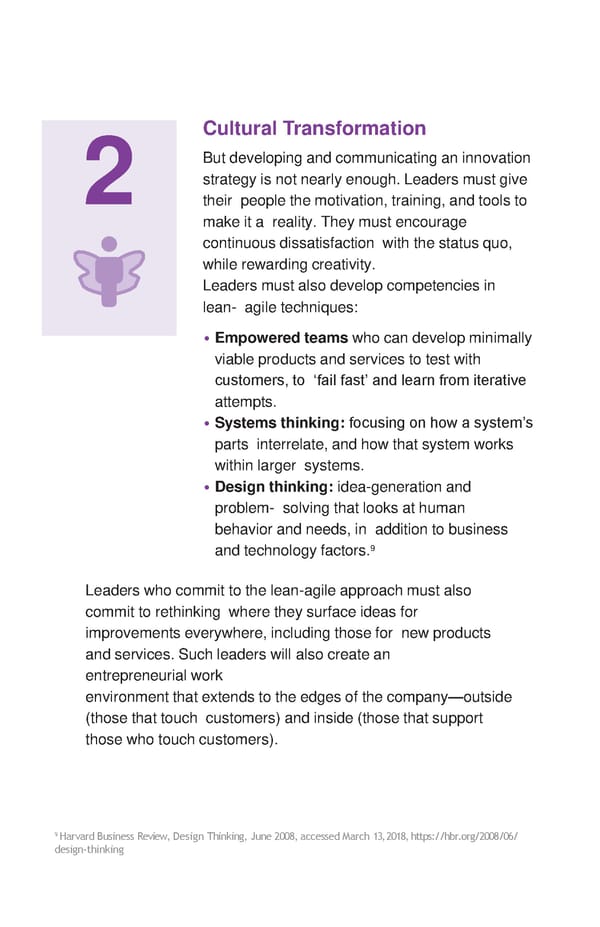Cultural Transformation But developing and communicating an innovation 2 strategy is not nearly enough. Leaders must give their people the motivation, training, and tools to make it a reality. They must encourage continuous dissatisfaction with the status quo, while rewarding creativity. Leaders must also develop competencies in lean- agile techniques: •Empowered teams who can develop minimally viable products and services to test with customers, to ‘fail fast’ and learn from iterative attempts. •Systems thinking: focusing on how a system’s parts interrelate, and how that system works within larger systems. •Design thinking: idea-generation and problem- solving that looks at human behavior and needs, in addition to business 9 and technology factors. Leaders who commit to the lean-agile approach must also commit to rethinking where they surface ideas for improvements everywhere, including those for new products and services. Such leaders will also create an entrepreneurial work environment that extends to the edges of the company—outside (those that touch customers) and inside (those that support those who touch customers). 9 Harvard Business Review, Design Thinking, June 2008, accessed March 13, 2018, https://hbr.org/2008/06/ design-thinking
 Three Elements that are Conducive for Innovation Page 1 Page 3
Three Elements that are Conducive for Innovation Page 1 Page 3